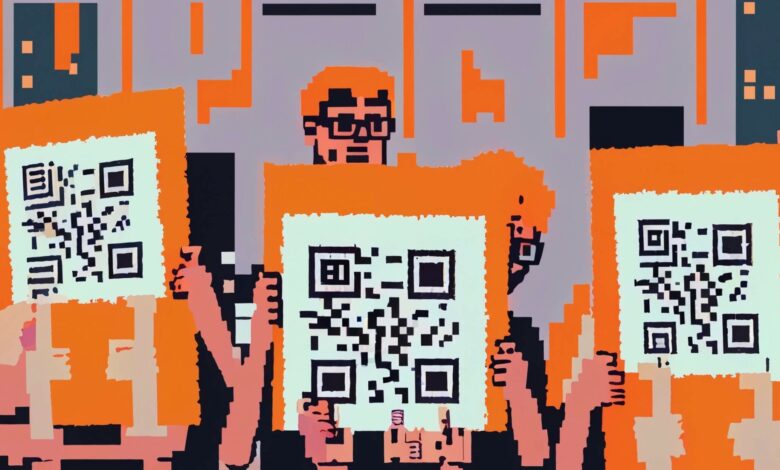The Evolution of QR Codes: From Basic Barcodes to Smart, Seamless Connectivity

Introduction:
Quick Response (QR) codes have become an integral part of our daily lives, seamlessly connecting the physical and digital worlds. Originally created in 1994 by Masahiro Hara for tracking automotive parts in manufacturing, QR codes have evolved significantly over the years. This article explores the fascinating journey of QR codes, from their humble beginnings as basic barcodes to their current role as powerful tools for communication, marketing, and beyond.
The Birth of QR Codes:
QR codes were invented by Denso Wave, a subsidiary of Toyota, to streamline the manufacturing process. Unlike traditional barcodes, QR codes could store more information in both the vertical and horizontal directions, allowing for a significant increase in data capacity. The square-shaped, two-dimensional codes quickly gained popularity due to their efficiency and versatility.
Early Applications:
In the early years, QR codes were primarily used in industrial settings for tracking and inventory management. However, as technology advanced, the potential applications of QR codes expanded beyond the manufacturing floor. The codes found their way into logistics, advertising, and various other fields, marking the beginning of their journey into mainstream usage.
Consumer Adoption:
The widespread adoption of smartphones played a pivotal role in the evolution of QR codes. With the integration of cameras into mobile devices, users could easily scan QR codes with their smartphones, unlocking a new realm of possibilities. This technological leap facilitated the integration of QR codes into consumer-facing applications, transforming them into a bridge between physical and digital experiences.
Marketing and Advertising:
One of the significant turning points for QR codes was their integration into marketing and advertising campaigns. Businesses began incorporating QR codes into print materials, product packaging, and advertisements, allowing consumers to access additional information, promotions, and interactive content with a simple scan. This marked a shift in how companies engaged with their target audience, creating dynamic and immersive experiences.
Contactless Transactions:
The global shift towards contactless transactions further propelled the evolution of QR codes. Mobile payment systems, such as Apple Pay, Google Pay, and various banking apps, adopted QR codes as a secure and efficient means of transferring funds. Restaurants, retailers, and service providers embraced QR codes for contactless menus, payments, and check-ins, especially in response to the COVID-19 pandemic.
Smart QR Codes:
Recent advancements in QR code technology have introduced “smart” QR codes, capable of storing dynamic information and adapting to changing circumstances. Smart QR codes can redirect users to different content based on factors like time, location, or user behavior. This innovation enhances personalization and enables businesses to tailor their interactions with consumers more effectively.
The Future of QR Codes:
As we look ahead, QR codes are likely to continue evolving, integrating with emerging technologies such as augmented reality (AR) and the Internet of Things (IoT). Their role in enhancing user experiences, streamlining processes, and providing valuable data insights will only expand. QR codes have evolved from a manufacturing convenience to a ubiquitous feature of our connected world, showcasing the adaptability and enduring relevance of this simple yet powerful technology.
Conclusion:
The evolution of QR codes is a testament to their versatility and adaptability. What started as a solution for efficient inventory management has transformed into a ubiquitous tool connecting businesses and consumers across various industries. As technology continues to advance, QR codes are poised to play an even more significant role in shaping the way we interact with the world around us, bridging the physical and digital realms in innovative and unexpected ways.




